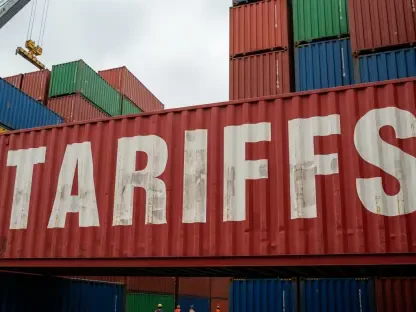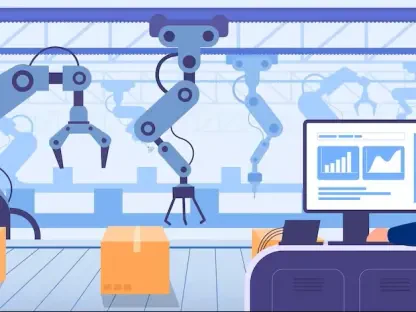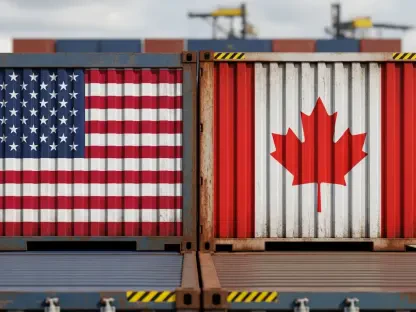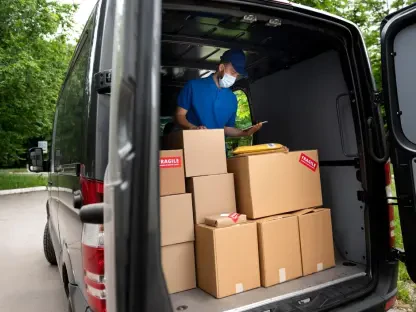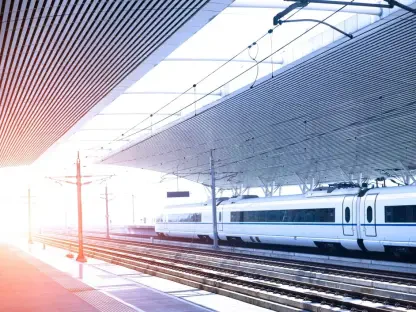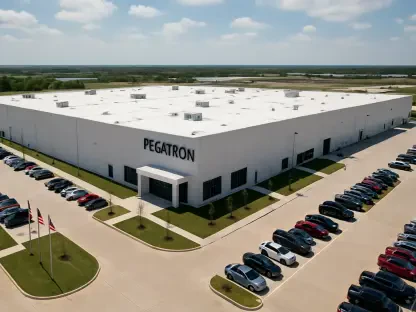Last mile delivery services are a uniquely challenging aspect of retail logistics, with a significant impact on customer satisfaction and overall brand perception. As eCommerce continues to dominate the retail landscape, optimizing last-mile delivery is critical for businesses seeking to provide speedy service and foster customer loyalty. The issue is especially pressing in bustling urban areas where increasing parcel volumes result in more delivery vehicles and a complex web of logistical problems. This article explores effective strategies and technologies retailers can adopt to optimize last-mile delivery in 2024.
1. Customer Placing an Order
When it comes to last mile delivery, the journey begins the moment a customer submits a purchase. This action typically occurs on the retailer’s website or through an in-store transaction. The order placement triggers a series of crucial behind-the-scenes processes, all of which need to be seamlessly synchronized to ensure timely and accurate delivery. The order details, including the customer’s address, the products ordered, and any specific shipping preferences, are fed into a centralized order management system. This system is responsible for processing and routing the order for final delivery based on predefined parameters.
The erosion of waiting times and the efficiency of order processing are key factors influencing customer satisfaction. Customers today expect real-time updates and transparency throughout the delivery process. Keeping customers informed at every stage, from order confirmation to dispatch, can significantly enhance their experience and build trust. Ensuring robust infrastructure and systems are in place to handle the initial order placement efficiently is paramount for any retailer aiming to optimize last mile delivery.
2. Products Arriving at Your Warehouse or Distribution Center
Once an order has been placed, the next step involves the products being shipped to the retailer’s warehouse or distribution center. This is a crucial phase where suppliers or manufacturers send the products to a centralized location where they will be sorted, organized, and prepared for dispatch. Efficiency at this stage can drastically reduce overall delivery time and ensure that items are promptly available for the next steps in the delivery process.
The key to handling this stage effectively lies in meticulous inventory management and swift sorting mechanisms. The use of advanced warehouse management systems (WMS) can greatly assist in tracking inventory in real-time. This ensures that stock levels are maintained, and that products are ready for immediate dispatch. Additionally, automating the sorting and organization process can minimize human error and speed up the entire operation. As customer expectations for quick delivery grow, reducing delays at the warehouse or distribution center becomes increasingly critical.
3. Staff Designating the Order to Delivery Personnel
Once the products arrive at the warehouse, the responsibility of designating the order to the appropriate delivery personnel begins. At this stage, the team assigns the order taking into consideration various factors such as delivery location, shipping preferences, delivery schedules, and the capacity of each vehicle. This step is vital as it sets the groundwork for efficient and timely delivery.
This process also heavily relies on effective communication and coordination within the team to assign deliveries optimally. Leveraging technology like delivery management software can facilitate this coordination. These systems provide real-time data on vehicle capacities, driver availability, and optimal delivery routes, ensuring that orders are assigned to the right personnel without delays. Properly executed, this step ensures a smooth transition from the warehouse to the customer’s doorstep, minimizing potential bottlenecks.
4. Items Scanned Onto the Delivery Vehicle
Before the items leave the warehouse, they must be accurately logged onto the delivery vehicle. This involves scanning each product to update its status within the inventory management system and ensure that a precise record is kept of what is on each delivery vehicle. This step not only helps in maintaining inventory accuracy but also allows for real-time tracking of the products during transit.
Advanced scanning technologies, such as barcode scanning and RFID tags, can streamline this process, making it more efficient and reducing the risk of errors. Real-time tracking provides numerous benefits for both the retailer and the customer. For the retailer, it means better oversight of the delivery process and the ability to respond quickly to any issues. For the customer, it offers peace of mind, as they can track their order and anticipate delivery times. This transparency plays a crucial role in enhancing customer satisfaction and trust in the service.
5. Courier Receiving Proof of Delivery from the Customer
The final step in the last mile delivery process is the courier obtaining proof of delivery from the customer. This confirmation can be in the form of an electronic signature, a photograph, or a physical document, depending on the retailer’s policy and the technology in use. This step serves as both a confirmation of successful delivery and a safeguard against potential disputes.
Implementing robust proof of delivery (POD) systems can significantly reduce the chances of misdelivery or lost packages. Digital PODs are especially advantageous as they often integrate seamlessly with delivery management systems, providing instant updates and reducing paperwork. Additionally, they offer more flexibility in how proof is recorded, whether through e-signatures, barcodes, or even biometric verification. By ensuring that delivery confirmation is securely obtained and recorded, retailers can protect themselves against fraudulent claims and provide customers with a reliable and transparent delivery experience.
Addressing Challenges in Last Mile Delivery
While optimizing each step of the delivery process is essential, retailers must also address common challenges that can disrupt last-mile logistics. Slower travel speeds, lost deliveries, product returns, and environmental factors are significant hurdles in ensuring a smooth delivery process.
Slower delivery speeds can be due to various factors such as traffic congestion, particularly in urban areas. To counter this, retailers can implement advanced route planning solutions that optimize delivery routes based on real-time traffic data, weather conditions, and delivery windows. Route optimization not only speeds up delivery times but also reduces fuel consumption and operational costs.
Lost deliveries often occur when customers are not available to receive their packages. Retailers can mitigate this by offering flexible delivery windows or pickup options such as BOPIS (Buy Online, Pickup In-Store). Employing delivery management systems that provide real-time updates can also reduce the incidence of lost deliveries by keeping customers informed and ready to receive their package.
Returns are another significant issue, especially in industries such as fashion and electronics. Handling reverse logistics efficiently is crucial for minimizing costs and maintaining customer satisfaction. Retailers can partner with third-party logistics providers (3PLs) specializing in return management to streamline this process.
Lastly, environmental factors are becoming increasingly important as consumers grow more conscious of sustainability. Retailers can explore eco-friendly delivery options such as electric vehicles or bike couriers. Additionally, compliance with environmental regulations and adopting green logistics practices can enhance a retailer’s reputation and appeal to environmentally conscious consumers.
Optimizing Last Mile Delivery
To further optimize last mile delivery, retailers can adopt various strategies and technology solutions designed to streamline operations and enhance customer experience.
BOPIS (Buy Online, Pick-Up In-Store)
BOPIS, or Buy Online, Pickup In-Store, is a strategy that allows customers to order products online and pick them up at a physical store at their convenience. This method combines the best of both online and offline shopping, offering flexibility and convenience to customers while helping retailers save on last mile delivery costs. BOPIS reduces the strain on delivery logistics since customers are responsible for the final leg of the journey. It also drives foot traffic to physical stores, potentially increasing in-store purchases.
Route Planning
Route planning is critical for optimizing delivery efficiency. Technology solutions like route planning software can analyze multiple data inputs such as traffic patterns, delivery windows, and vehicle capacities to determine the most efficient delivery routes. These solutions not only minimize driving time and fuel consumption but also enhance delivery reliability. By integrating real-time alerts and historical data analysis, route planning software ensures that drivers take the best possible routes, reducing delays and operational costs.
Crowdsourced Delivery
Crowdsourced delivery, which involves hiring independent contractors to deliver packages, has emerged as a flexible and scalable solution for retailers. Utilizing platforms like Postmates or TaskRabbit, retailers can quickly scale delivery operations during peak times without the need to maintain a large fleet. Crowdsourced delivery fulfills the demand for quick and on-demand service, offering a competitive edge in customer satisfaction.
Local Delivery Services
Investing in local delivery services can further optimize the last mile delivery process. Retailers can dedicate in-store staff to handle local deliveries, ensuring faster and more personalized service. This strategy reduces reliance on traditional couriers and 3PLs, offering better control over delivery timing and customer interactions. Local delivery services can set specific delivery windows and minimum order requirements to maintain profitability.
Proof of Delivery
Implementing robust proof of delivery systems is another key strategy in optimizing last mile delivery. By obtaining digital or physical confirmation from customers, retailers can reduce disputes and enhance accountability. Digital POD options like barcode scanning, photo signatures, and contactless verification offer greater flexibility and integration with other delivery management systems. Proof of delivery ensures that both retailers and customers have a reliable record of the transaction, improving trust and satisfaction.
Leveraging Advanced Technologies
To stay competitive and meet ever-increasing customer expectations, retailers should leverage advanced technologies tailored to streamline last mile delivery.
Onfleet
Onfleet is a comprehensive delivery management platform designed to streamline operations and enhance customer satisfaction. It offers route optimization, real-time tracking, and task assignment to drivers through an intuitive dashboard. By providing a customer-facing tracking page, Onfleet ensures transparency and allows for effortless customization, enhancing the overall delivery experience.
TOSHI
TOSHI positions itself as a hyper-local last mile partner, offering unique features for both e-commerce and brick-and-mortar stores. It allows customers to schedule deliveries within a one-hour window and provides additional services like in-home setup. TOSHI uses electric vehicles and public infrastructure to support carbon-neutral deliveries, appealing to environmentally conscious consumers.
XpressRun
XpressRun integrates multiple logistics management tools to offer a comprehensive last mile delivery solution. It collaborates with various carriers to provide instant shipping options, real-time tracking, and competitive pricing. By integrating with platforms like DoorDash and Roadie, XpressRun ensures efficient and scalable delivery operations.
Emerging Trends in Last Mile Delivery
Retailers must stay ahead of emerging trends to continue optimizing last mile delivery.
Opening Retail Locations
Continuing the trend of blending online and offline experiences, many eCommerce retailers are opening physical stores or pop-up shops. This approach reduces last mile delivery costs by enabling options like BOPIS and fostering stronger customer relationships. Smaller, direct-to-consumer brands find this method effective for building brand awareness and reducing logistical expenses.
Robots and Drones
Automation is revolutionizing last mile delivery, with robots and drones playing a significant role. Drones, in particular, are expected to transform delivery methods, making them faster and more cost-effective. Retailers should explore partnerships with logistics companies that are integrating autonomous vehicles and drones into their networks to stay ahead of the curve.
Micro Warehousing
Micro warehousing involves using small fulfillment centers located in urban areas to reduce delivery times and improve sustainability. This approach allows retailers to offer ultra-fast delivery and efficient store replenishment. By partnering with 3PLs specializing in micro warehousing, retailers can minimize costs and enhance customer satisfaction.
Improving Costs of Your Last Mile Delivery
Last-mile delivery services present unique challenges in retail logistics, heavily influencing customer satisfaction and overall brand perception. As eCommerce continues to shape the retail landscape, improving last-mile delivery becomes essential for businesses eager to offer swift service and build customer loyalty. This issue is particularly urgent in busy urban areas where rising parcel volumes lead to more delivery vehicles and an intricate network of logistical challenges.
In 2024, businesses must explore effective strategies and technologies to enhance last-mile delivery. For instance, implementing advanced route planning software can help optimize delivery paths, reducing delays and fuel consumption. Additionally, using electric vehicles or drones could minimize environmental impact and improve efficiency. Smart lockers and pickup points in convenient locations offer customers flexibility, reducing the need for home deliveries in congested areas.
Furthermore, real-time tracking systems provide customers with up-to-date information about their deliveries, enhancing transparency and trust. Retailers should also consider collaborating with local couriers or using crowdsourced delivery options to maintain a reliable delivery network. Adopting these strategies and technologies will help retailers meet the demands of the modern consumer, ensuring faster, more efficient last-mile delivery services.

